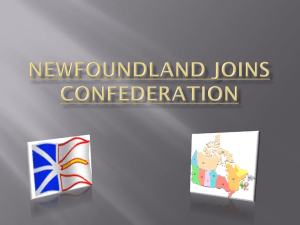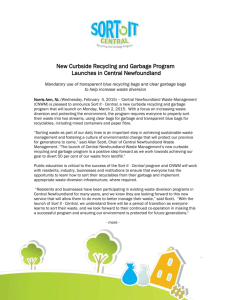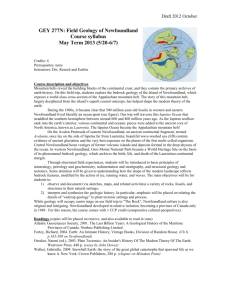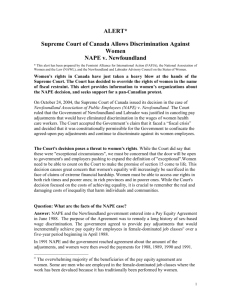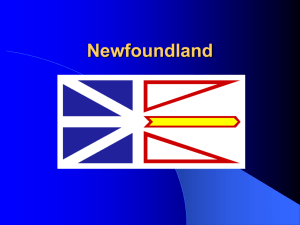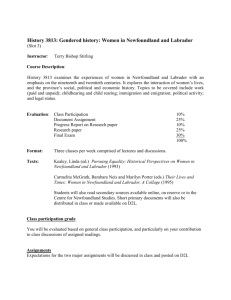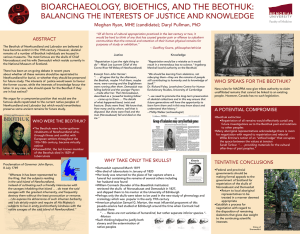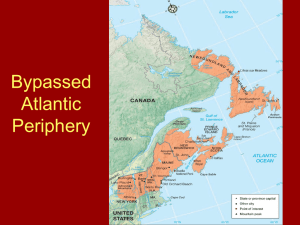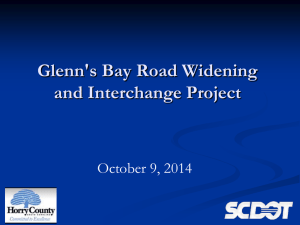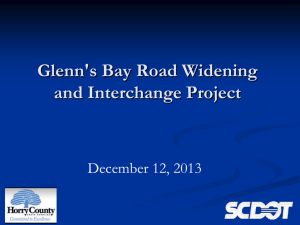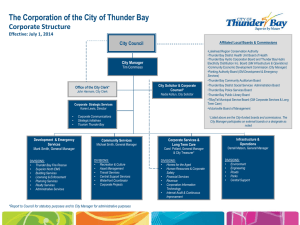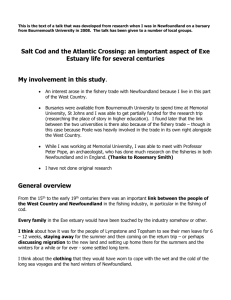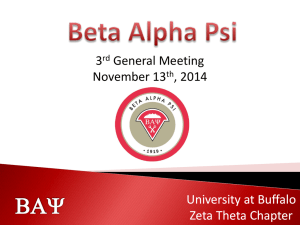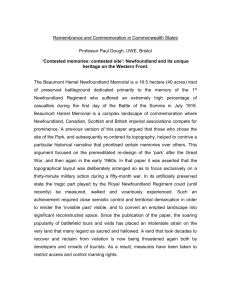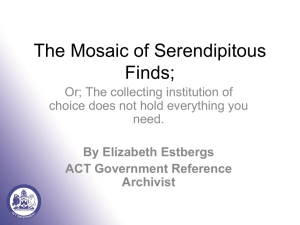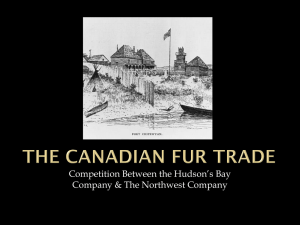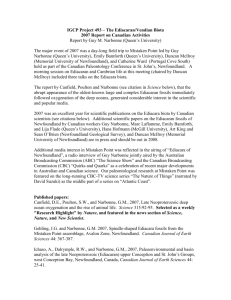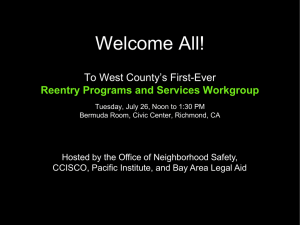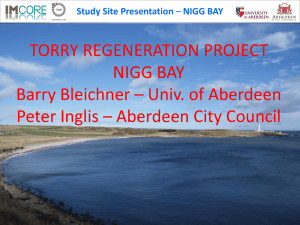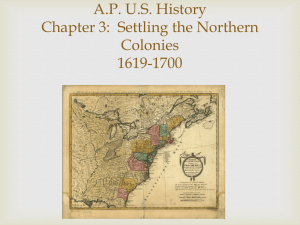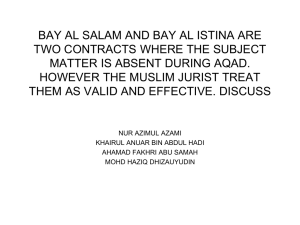Chap 1-2 Review
advertisement
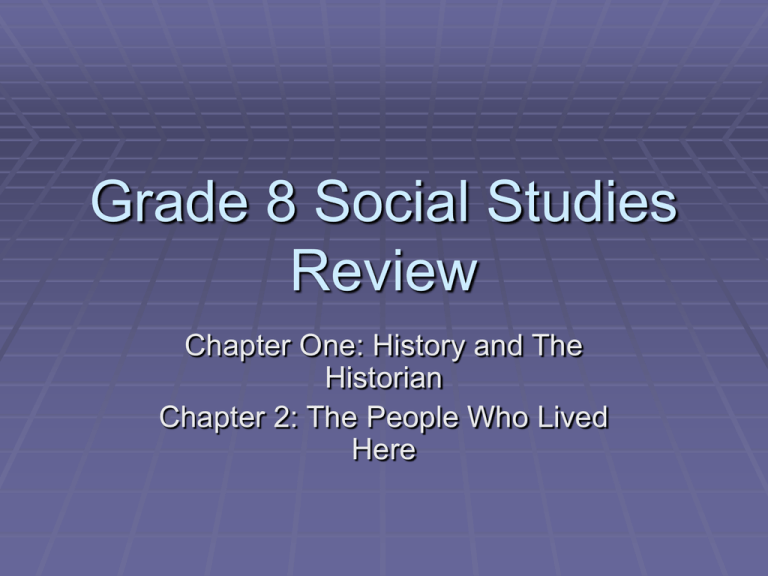
Grade 8 Social Studies Review Chapter One: History and The Historian Chapter 2: The People Who Lived Here This is made up of major events and experiences in your life that shape you and your memories. Collective Past Give an example of individual past. Diary Souvenirs Childhood photo Family heirlooms Autobiography/biography Family tree The history of a people. Collective Past Give an example of collective past. Stories told by relatives Books/texts Movies A method of looking for evidence to answer questions that are posed. Historical Method List the 4 steps of the Historical Method Pose a good historical question Collect reliable information Organize and evaluate information Interpret information and present conclusions A first-hand account made at the time that an event occurs. Primary Source List 5 sources of information. Libraries and museums Archives Monuments Historic sites Internet Oral history Literary and artistic expressions Where did the Beothuk live in Newfoundland? Avalon Peninsula St. Georges Bay Bonavista Peninsula Red Indian Lake Cone-shaped tent, covered in birch bark an in the winter insulated with moss Mamateek Five reasons Beothuk became extinct Loss of land (Europeans and Mi,kmaq) Starvation Lack of authority Diseases (TB) Conflict/violence Mi,kmaq word for Newfoundland meaning land across the water. Ktaqmkuk The way a person or group lives. Lifestyle An interpretation of an event based on information gathered from primary sources. Secondary Source What are the 4 groups of Europeans that came to Newfoundland Scottish English French Irish Reasons why people chose to leave their place of origin are called Push factors Reasons why people chose to move to a particular destination are called Pull factors Explain why the Irish came to Newfoundland. Migratory fishery Poverty Religious discrimination Rapid population increase Crop failures Explain why the English came to Newfoundland. Maintain migratory fishing premises Did not want to risk ocean travel in fear of attacks from the French Navy Explain why the Scottish came to Newfoundland. Fish trade and sealing industry Railway Farming Explain why the French came to Newfoundland. Farming and fishery Where did the English settle? Bonavista to St. Anthony St. George’s Bay Bay of Islands Bonne Bay Southern Labrador Where did the French settle? St. George’s Bay, mostly on the Port au Port Peninsula Codroy Valley due to good climate Where did the Irish settle? St. John’s to Placentia Bay Conception bay Fogo Island Where did the Scottish settle? Labrador (worked with HBC) Codroy Valley and St George’s Bay St John’s, Conception Bay, Trinity Bay, and Bonavista Bay What types of work did the English do when they settled in Newfoundland? Fishery as fishermen, employees of merchants, boat owners What types of work did the French do when they settled in Newfoundland? Farming Fishery What types of work did the Irish do when they settled in Newfoundland? Fishery (summer) Seal industry (winter) Boatbuilding industry (winter) What types of work did the Scottish do when they settled in Newfoundland? Scottish merchants became involved in the fish trade and sealing industry Railway Farmers HBC What are 2 other groups that immigrated to Newfoundland? Lebanese Chinese Who is Bishop Michael Fleming? Irish immigrant from County Tipperary, Ireland What was his biggest accomplishment and why did he do it? Construction of Basilica Wanted to build “a temple superior to any other on the island” When population increases due to there being more births than deaths and higher rated of immigration than emigration this is called: Natural Increase To move from place to place within Newfoundland is called: Internal migration
